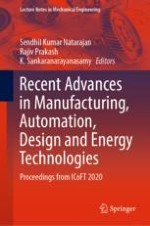2022 | Book
Recent Advances in Manufacturing, Automation, Design and Energy Technologies
Proceedings from ICoFT 2020
Editors: Dr. Sendhil Kumar Natarajan, Prof. Rajiv Prakash, Dr. K. Sankaranarayanasamy
Publisher: Springer Singapore
Book Series : Lecture Notes in Mechanical Engineering
